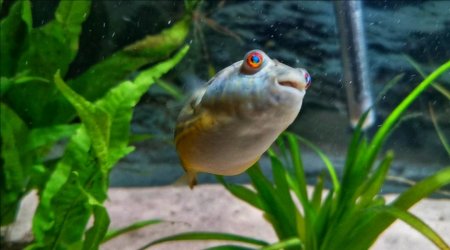Hi guys
Hope your all keeping well and safe.
I've had my puffer for well over 3 months, and doing great. Growing nicely and got such a character on him.
We know these are messy eaters, produce loads of waste and leave stuff in tank.
What should my nitrates really be..
My water parameters are this latest reading.
No3 30
No2 0
Gh 8
Kh 10
Ph 7.2
Cl2 0
Nirtates do go down to below 10 after 50% water change. He is a very happy boy swims around loads, greats me everytime walk past tank. He does breath a little heavy at time, but think that when he full
Hope your all keeping well and safe.
I've had my puffer for well over 3 months, and doing great. Growing nicely and got such a character on him.
We know these are messy eaters, produce loads of waste and leave stuff in tank.
What should my nitrates really be..
My water parameters are this latest reading.
No3 30
No2 0
Gh 8
Kh 10
Ph 7.2
Cl2 0
Nirtates do go down to below 10 after 50% water change. He is a very happy boy swims around loads, greats me everytime walk past tank. He does breath a little heavy at time, but think that when he full




